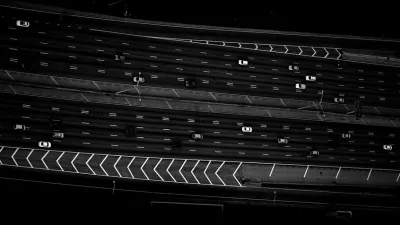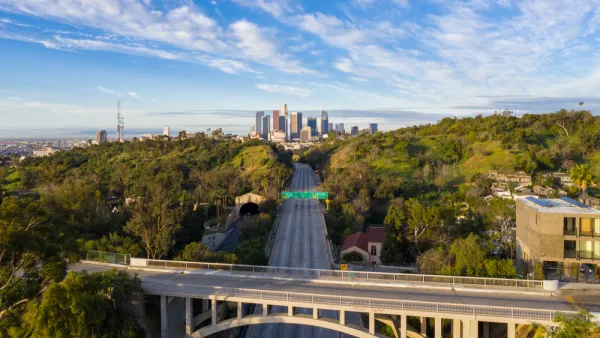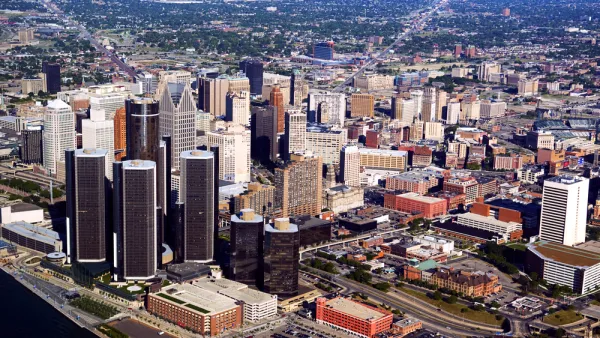Logically we might assume that as cities grow larger, commutes get harder. It can certainly feel that way. But research points to structural factors that actually make commuting in big cities more efficient.

Traffic can be annoying, but it also suggests that a city is thriving. Eric Jaffe writes, "What is a little surprising is that even as cities get larger, life in them doesn't necessarily grind to a halt. Sure, it can sometimes feel like that's the case when you're stuck in rush-hour gridlock. But while traffic congestion may be a personal annoyance, it's also a broad indication of a healthy economy."
Despite their high populations, commuting in big cities is more efficient than one might think. "The reason bigger workforces don't translate into total stagnation is that metros have 'nimble and self-adjusting commuting patterns' that preserve their economic advantage, report [Shlomo Angel and Alejandro Blei] in a paper in the journal Cities. Those patterns have three key components: density, job and home relocation, and overall mobility."
Jaffe goes on to discuss each of these factors in detail. The implications for planning are mixed: "On one hand, the benefits of density and mobility suggest a need for compact development near transit lines; on the other hand, the benefits of freeway speed would seem to endorse a transportation status quo that centers on car travel."
FULL STORY: Why Commutes Aren't Twice as Long in Cities With Twice the Population

National Parks Layoffs Will Cause Communities to Lose Billions
Thousands of essential park workers were laid off this week, just before the busy spring break season.

Retro-silient?: America’s First “Eco-burb,” The Woodlands Turns 50
A master-planned community north of Houston offers lessons on green infrastructure and resilient design, but falls short of its founder’s lofty affordability and walkability goals.

Delivering for America Plan Will Downgrade Mail Service in at Least 49.5 Percent of Zip Codes
Republican and Democrat lawmakers criticize the plan for its disproportionate negative impact on rural communities.

Test News Post 1
This is a summary

Test News Headline 46
Test for the image on the front page.

Balancing Bombs and Butterflies: How the National Guard Protects a Rare Species
The National Guard at Fort Indiantown Gap uses GIS technology and land management strategies to balance military training with conservation efforts, ensuring the survival of the rare eastern regal fritillary butterfly.
Urban Design for Planners 1: Software Tools
This six-course series explores essential urban design concepts using open source software and equips planners with the tools they need to participate fully in the urban design process.
Planning for Universal Design
Learn the tools for implementing Universal Design in planning regulations.
EMC Planning Group, Inc.
Planetizen
Planetizen
Mpact (formerly Rail~Volution)
Great Falls Development Authority, Inc.
HUDs Office of Policy Development and Research
NYU Wagner Graduate School of Public Service




























